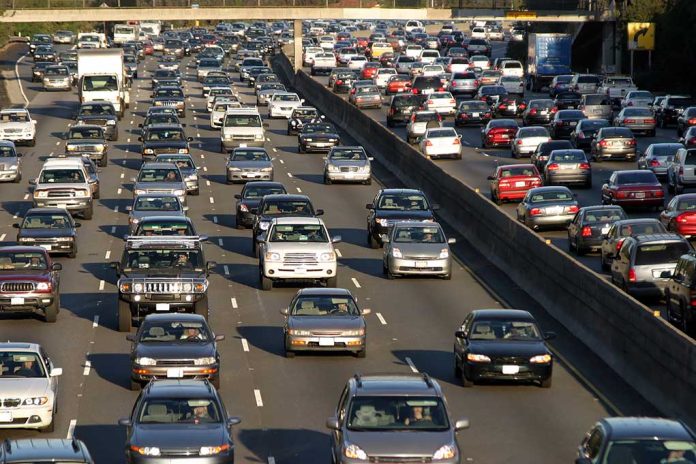
San Francisco has deployed California’s first fixed-speed cameras across 33 locations, implementing a controversial system that charges different penalties based on drivers’ income levels.
Key Takeaways
- San Francisco installed 33 speed cameras in school zones and high-injury corridors, with a two-month grace period before fines begin.
- Fines range from $50 to $500 based on speed, but low-income drivers can receive up to 80% discounts on penalties.
- The “equity-based” fine structure charges different amounts for the same violation depending on the driver’s income level.
- The program is part of a larger initiative supported by Governor Gavin Newsom, with Los Angeles planning to implement similar cameras in 2026.
- Officials claim the cameras will improve safety, but critics question whether the program is designed primarily for revenue generation.
California’s First Fixed-Speed Camera System
San Francisco has rolled out California’s first network of fixed-speed cameras, installing 33 devices across the city. The cameras have been strategically positioned in school zones and corridors with high rates of traffic accidents. Following authorization through the passage of Assembly Bill 645, the San Francisco Municipal Transportation Agency (SFMTA) began implementing the program on March 20. Warning signs have been placed at intersections where cameras are operational, providing notice to motorists that their speeds are being monitored electronically.
🚨 INSANE: California is officially launching its Speed Safety System Pilot Program, which will issue speeding tickets based on your income bracket.
pic.twitter.com/8dXXn3jxkA— Proud Elephant 🇺🇸🦅 (@ProudElephantUS) April 1, 2025
The city has instituted a two-month grace period during which violators will receive warnings rather than fines. This transition period allows drivers to adjust to the new enforcement system before penalties take effect. Camera locations were selected based on traffic safety data, with priority given to areas with histories of speed-related accidents and injuries. Some cameras are already issuing warnings, while others are scheduled to become operational in the near future.
Tiered Fine Structure Based on Income
The speed camera program features a graduated fine structure based on how fast drivers exceed the posted speed limit. Violations begin at $50 for driving 11-15 mph over the limit, increasing to $100 for speeds 16-25 mph above the limit. More serious offenses incur heavier penalties: $200 for exceeding the limit by 26 mph or more, and $500 for drivers caught traveling 100 mph or faster. Unlike traditional traffic tickets, these are civil penalties and do not result in points being added to drivers’ license records.
The program introduces an “equity-based” component that offers substantial discounts based on income. Low-income drivers can receive 50% reductions on fines, with the income thresholds adjusted according to household size. Individuals or families participating in public assistance programs like SNAP, CalWORKS, Medi-Cal, CAPI, or IHSS may qualify for even steeper discounts of up to 80%. Critics have questioned whether such a system unfairly penalizes higher-income residents for identical traffic violations.
Potential Impact and Expansion
The SFMTA has the capacity to issue up to 42,000 citations daily through this automated system, raising questions about whether the program is primarily focused on safety or revenue generation. Local advocacy group Walk SF has expressed support for the cameras, citing data suggesting potential reductions in crashes and fatalities where similar systems have been implemented. The program has received backing from California Governor Gavin Newsom, and similar initiatives are already being planned for other California cities, with Los Angeles scheduled to launch its own speed camera program in 2026.
The SFMTA has developed resources to support the implementation, including an interactive map showing camera locations, background information on the program, and a forthcoming payment portal for processing citations. The agency is providing contact information for inquiries and offering sign-up options for citizens who wish to receive updates about the program. For those who receive citations, the system will provide clear instructions for payment options, including the process for applying for income-based discounts.
Sources:
SF Launches California’s First Fixed Speed Cameras, Fines Scaled By Income
SF Launches “Equity” Speed Cameras, Punishing Drivers By Income













